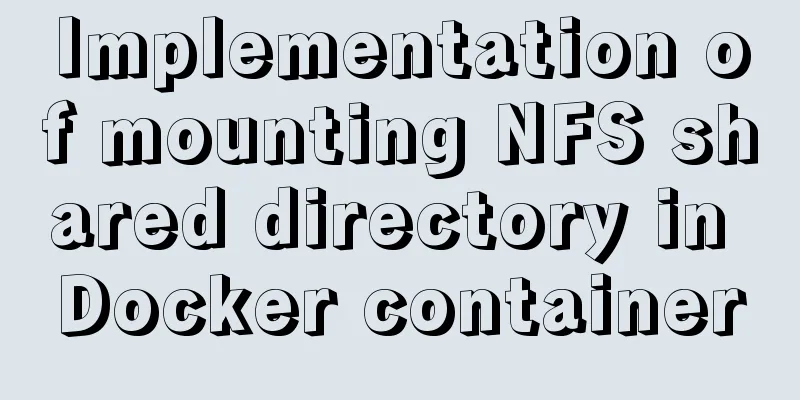Building a KVM virtualization platform on CentOS7 (three ways)

|
KVM stands for Kernel-based Virtual Machine, which is a Linux kernel module that turns Linux into a hypervisor: it was developed by Quramnet, which was acquired by Red Hat in 2008. The overall structure of KVM: From the GUI to the Linux kernel, it includes the following five components: 1) virt-manager A GUI/CUI user interface for managing VMs; it uses the libvirt api to call various functions of the VM. 2) libvirt A tool and interface, as a more common server virtualization software, it supports Xen, VMware ESXi/GSX, and of course, QEMU/KVM. 3) QEMU An emulator that interacts with the KVM kernel module and handles various client system requests such as I/O; one QEMU process corresponds to one client system. 4) KVM kernel module In a narrow sense, KVM is a Linux kernel module that handles VM Exits and executes VM Entry instructions on the client system. 5) Linux Kernel Since QEMU runs as a normal user process, the scheduling of the corresponding client system is handled by the Linux kernel itself. All components are open source software (OSS). KVM installation: Environmental requirements: 1. If it is a physical server, you need to turn on the virtualization function (Virtualization Technology) in the BIOS. Generally, this function is turned on by default on servers.
2. If you are using VMware Workstation for the experiment, the CPU of the created virtual machine must have the virtualization function checked so that the virtual machine will support KVM virtualization
Installation method: The simplest installation method is to install the virtualization function when installing the system. Here, take CentOS7.3 as an example. When selecting the installation package, just select "Server with GUI" as shown below, and check "Virtualization Client", "Virtualization Hypervisor", and "Virtualization Tools".
If your system is minimally installed, you should install the following required software: # yum groupinstall "GNOME Desktop" //Install the GNOME desktop environment Check whether the CPU supports # grep -E 'svm|vmx' /proc/cpuinfo - vmx is for Intel processors - svm is for AMD processors Install virtualization software # yum install epel-rpm-macros.noarch //Install the epel source# yum install qemu qemu-img qemu-kvm libvirt libvirt-python libguestfs-tools virt-install # yum install virt-manager virt-viewer //Install graphical tools# systemctl enable libvirtd # systemctl start libvirtd Check whether the KVM module is installed [root@localhost ~]# lsmod |grep kvm kvm_intel 174250 0 kvm 570658 1 kvm_intel irqbypass 13503 1 kvm 1. Create a virtual machine using the graphical interface 1. Preparation before creating a virtual machine: (1) Operating system installation media: ISO file, copy the system image file to the /kvm/iso directory [root@localhost ~]# mkdir /kvm/iso -p [root@localhost ~]# umount /dev/sr0 [root@localhost ~]# cp /dev/sr0 /kvm/iso/Centos7.iso (2) Disk space preparation: Add New Disk Create LVM Create a file system and mount point, and set it to automatically mount at startup pvcreate /dev/sdb vgcreate kvm_vg /dev/sdb lvcreate -n kvm_lv -L 100G kvm_vg mkdir /kvm/vfs mount /dev/kvm_vg/kvm-lv /kvm/vfs (3) Create using the virt-manager graphical interface Virt-manager is a graphical virtual machine management software based on libvirt. Enter the virt-manager command as root in the command line, and the virt-manager management interface will appear.
Create an image storage pool named iso and set the directory to /kvm/iso to store the iso CD image files used by the KVM virtual machine in the future.
Create a storage pool named vfs, directory /kvm/vfs, and create a storage volume, which is actually the hard disk file of the KVM virtual machine
In the Virtual System Manager, select "New Virtual Machine" and select "Local Installation Media"
Select ISO image file
Select memory size and number of CPUs
Select the virtual machine disk file
Give the virtual machine a name and click Finish.
Click Finish and the virtual machine will start to be created. Then you can 2. Create a virtual machine using command line mode 1. Use the qemu-img command to create a disk file Create a raw disk file [root@localhost ~]# qemu-img create /kvm/vfs/vm1.raw 20G Convert the disk format to qcow2 [root@localhost ~]# qemu-img convert -f raw -O qcow2 /kvm/vfs/vm1.raw /kvm/vfs/vm1.qcow2 Directly create a disk file in qcow2 format [root@localhost ~]# qemu-img create -f qcow2 /kvm/vfs/vm1.qcow2 20G 2. Use the virt-install command to create a virtual machine General options: -n NAME, --name=NAME virtual machine name -r MEMORY, --ram=MEMORY Memory in MB to allocate for client events --vcpus=VCPUS configures the number of virtual CPUs (vcpus) of the virtual machine, such as: --vcpus 5 --vcpus 5, maxcpus=10 --vcpus socket=2,cores=4,threads=2 --cpuset=CPUSET Set which physical CPUs domain can use. --cpu=CPU CPU model and function, such as: --cpu coreduo,+x2apic --description=DESCRIPTION Human-readable VM description saved in the generated XML. --security=SECURITY Set domain security driver configuration. --numatune=NUMATUNE Adjust NUMA policy for domain processes. Installation method options: -c CDROM, --cdrom=CDROM CDROM installation media -l LOCATION, --location=LOCATION Installation source (for example: nfs:host:/path, http://host/path, ftp://host/path) --pxe Boot from the network using the PXE protocol --import Build the client into the disk image --livecd Treat CD-ROM media as Live CD -x EXTRA, --extra-args=EXTRA Parameters to append to a kernel booted with --location --os-type=DISTRO_TYPE Operating system type, 'linux', 'unix', 'windows' --os-variant=DISTRO_VARIANT Operating system version, such as: 'fedora6', 'rhel5', 'solaris10', 'win2k' --boot=BOOTOPTS Optional post-configuration installation boot order, menu, permanent kernel boot, etc. Storage Configuration: --disk=DISKOPTS Specify storage with various options. Ex. --disk path=/my/existing/disk --disk path=/my/new/disk,format=qcow2,size=5,sparse (in GB) --disk vol=poolname:volname,device=cdrom,bus=scsi,... --nodisks Do not set up any disks for this client. --filesystem=FILESYSTEMS Pass the host directory to the virtual machine. For example: --filesystem /my/source/dir,/dir/in/guest --filesystem template_name,/,type=template Network configuration: -w NETWORK, --network=NETWORK Configure the customer network interface. Ex: --network bridge=mybr0 --network network=my_libvirt_virtual_net --network network=mynet,model=virtio,mac=00:11... --nonetworks Do not create network interfaces for this guest. Graphics Configuration: --graphics=GRAPHICS Configure the virtual machine display settings. For example: --graphics vnc --graphics spice,port=5901,tlsport=5902 --graphics none --graphics vnc,password=foobar,port=5910,keymap=ja --noautoconsole Do not automatically try to connect to the client console Equipment options: --serial=SERIALS configure the virtual machine serial port device --parallel=PARALLELS Configure virtual machine parallel port device --channel=CHANNELS Configure virtual machine communication channels --console=CONSOLES Configure a text console connection between the virtual machine and the host --host-device=HOSTDEVS Configure the physical host device connected to the client --soundhw=SOUNDHW configure client sound device emulation --watchdog=WATCHDOG configure the virtual machine watchdog device --video=VIDEO Configure the virtual machine's video hardware. --smartcard=SMARTCARD Configure the virtual machine smart card device. For example: --smartcard-mode=passthrough --redirdev=REDIRDEV Configure a guest redirection device. For example: --redirdev usb,type=tcp,server=192.168.1.1:4000 Virtualization Platform Options: -v, --hvm The client should be a fully virtualized client -p, --paravirt This client is a paravirtualized client --container This guest should be a container guest --virt-type=HV_TYPE Name of the hypervisor to use (kvm, qemu, xen) --arch=ARCH Simulated CPU architecture --machine=MACHINE The machine type to emulate --noacpi disable ACPI for fully virtualized guests (overrides value in os-type/os-variant db) -u UUID, --uuid=UUID Client UUID. Other options: --autostart Automatically start the domain when the host is booted. --print-xml Output XML of the generated domain instead of defining the virtual machine. --print-step=XMLSTEP Output detailed installation steps --noreboot Do not boot the virtual machine after completing the installation. --wait=WAIT Time to wait (in minutes) --dry-run Complete the installation steps but do not create devices or define virtual machines. --force Force a 'yes' answer to any application prompt, terminating other prompts -q, --quiet disables silent output --prompt Require user input for ambiguous cases or required options -d, --debug Input troubleshooting information 3. Install the virtual machine using pure command line [root@localhost ~]# qemu-img create -f qcow2 /kvm/vfs/vm2.qcow2 20G [root@localhost ~]# virt-install -n vm2 \ Define the virtual machine name > -r 1024 \ Memory size > --vcpus 1 \ Number of CPUs > -l /kvm/iso/Centos7.iso \ ISO location > --disk path=/kvm/vfs/vm2.qcow2,format=qcow2 \ Disk file location and format > --nographics \ Do not install using graphics > -x console=ttyS0 allows logging into the virtual machine using the console terminal Execute the command to install the operating system and adjust the following configuration parameters as needed:
4. Use VNC to create a virtual machine system [root@localhost ~]# qemu-img create -f qcow2 /kvm/vfs/vm3.qcow2 20G [root@localhost ~]# virt-install -n vm3 \ Define the virtual machine name > -r 1024 \ Memory size > --vcpus 1 \ Number of CPUs > -l /kvm/iso/Centos7.iso \ ISO location > --disk path=/kvm/vfs/vm3.qcow2,format=qcow2 \ Disk file location and format > --graphics vnc,listen=0.0.0.0,port=5924, \ vnc installation, use port 5924 > --noautoconsole \ Do not automatically try to connect to the client console > --accelerate \ Speed up installation > --autostart Automatically start the domain when booting the host [root@localhost ~]# firewall-cmd --add-port=5924/tcp Allow vnc connection Use vnc client software to connect and install The above is the full content of this article. I hope it will be helpful for everyone’s study. I also hope that everyone will support 123WORDPRESS.COM. You may also be interested in:
|
<<: JavaScript implements product details of e-commerce platform
>>: How to remove MySQL from Ubuntu and reinstall it
Recommend
How to use environment variables in nginx configuration file
Preface Nginx is an HTTP server designed for perf...
Vue integrates PDF.js to implement PDF preview and add watermark steps
Table of contents Achieve results Available plugi...
In-depth understanding of the use of the infer keyword in typescript
Table of contents infer Case: Deepen your underst...
HTML web page creation tutorial Use iframe tags carefully
Using iframes can easily call pages from other we...
Detailed explanation of MySQL backup process using Xtrabackup
Table of contents 01 Background 02 Introduction 0...
Three methods of inheritance in JavaScript
inherit 1. What is inheritance Inheritance: First...
The concept of MTR in MySQL
MTR stands for Mini-Transaction. As the name sugg...
CSS simulates float to achieve the effect of center text surrounding the image on the left and right
What is text wrapping around images? This is the ...
Solve the problem that MySQL read-write separation causes data not to be selected after insert
MySQL sets up independent writing separation. If ...
MySQL tutorial data definition language DDL example detailed explanation
Table of contents 1. Introduction to the basic fu...
Restart all stopped Docker containers with one command
Restart all stopped Docker containers with one co...
Detailed explanation of this reference and custom properties in JavaScript
Table of contents 1. this keyword 2. Custom attri...
How does MySQL achieve master-slave synchronization?
Master-slave synchronization, also called master-...
Mysql query database capacity method steps
Query the total size of all databases Here’s how:...
How to set the width attribute to the style of the span tag
If you directly set the width attribute to the sty...






















